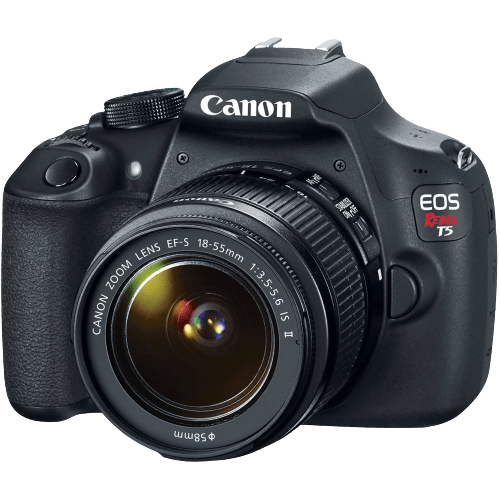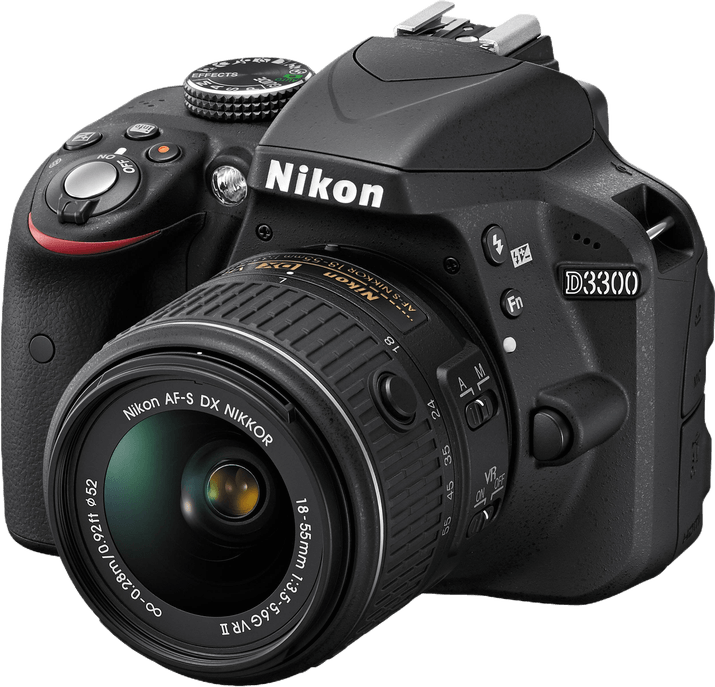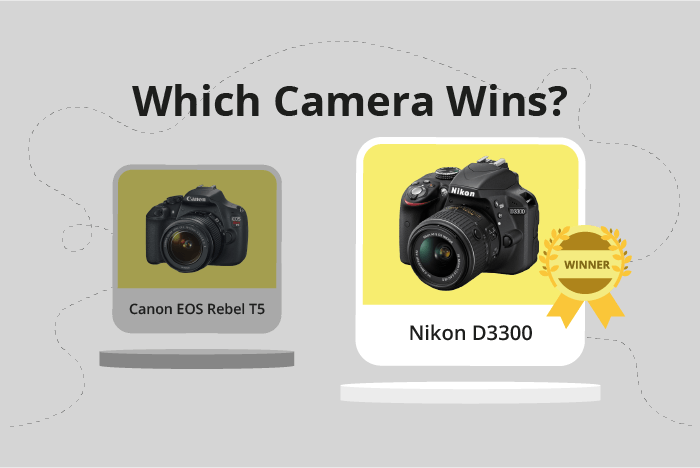Canon EOS Rebel T5 / 1200D vs Nikon D3300 Comparison
Canon EOS Rebel T5 / 1200D

Nikon D3300

The Nikon D3300 outperforms the Canon EOS Rebel T5 / 1200D with a score of 55/100 compared to 38/100. Both cameras are DSLR models released in 2014, with the Canon T5 priced at $500 and the Nikon D3300 at $650. They share similar dimensions, with the Canon T5 measuring 130 x 100 x 78mm and the Nikon D3300 at 124 x 98 x 76mm.
The Nikon D3300 has the advantage of being lighter, weighing 430g, while the Canon T5 weighs 480g. This makes the Nikon D3300 more comfortable to carry during long photography sessions. However, the Canon T5 has a slightly lower launch price, making it a more budget-friendly option.
Taking into account their specifications, the Nikon D3300 stands out as the better camera, offering higher performance and a lighter design. The Canon T5, on the other hand, appeals to those seeking a more affordable DSLR option.
Canon EOS Rebel T5 / 1200D vs Nikon D3300 Overview and Optics
The Nikon D3300 clearly outperforms the Canon EOS Rebel T5 / 1200D in the optics category, scoring 64 out of 100 points, while the Canon T5 scores 39 points. Both cameras share some common specifications, such as CMOS sensor type, APS-C sensor size, and the lack of image stabilization. However, there are distinct differences that set the Nikon D3300 apart as the superior camera in this comparison.
The Nikon D3300 boasts a higher megapixel count of 24.2 compared to the Canon T5’s 18 megapixels, which allows for greater image detail and sharper resolution. Additionally, the Nikon D3300 has a faster shooting speed of 5 frames per second, while the Canon T5 lags behind at 3 frames per second. This makes the Nikon D3300 more suitable for capturing fast-moving subjects and action shots. Furthermore, the Nikon D3300’s Expeed 4 processor contributes to its superior image quality and overall performance compared to the Canon T5’s older Digic 4 processor.
In terms of sensor performance, the Nikon D3300’s DXOMARK score of 82 significantly surpasses the Canon T5’s score of 63, indicating better overall image quality and low-light performance. Despite these advantages, the Canon T5’s lens mount, Canon EF-S, offers a wide range of compatible lenses, similar to the Nikon D3300’s Nikon F DX lens mount.
Taking all these factors into account, the Nikon D3300 emerges as the better camera in terms of optics, offering higher image quality, faster shooting speed, and better low-light performance. The Canon EOS Rebel T5 / 1200D, while offering a similar lens compatibility, falls short in comparison to the Nikon D3300’s superior performance and capabilities.
Canon EOS Rebel T5 / 1200D vs Nikon D3300 Video Performance
The Nikon D3300 outperforms the Canon EOS Rebel T5 / 1200D in video capabilities, scoring 56/100 compared to the Rebel T5’s 43/100. Both cameras share some common specifications, such as a maximum video resolution of Full HD and maximum video dimensions of 1920 x 1080. Additionally, neither camera has built-in time-lapse functionality.
The Nikon D3300’s superior video performance is primarily due to its higher maximum video frame rate of 60fps, compared to the Canon Rebel T5’s 30fps. This higher frame rate allows for smoother video playback and the ability to capture fast-moving subjects with greater clarity. The D3300’s advantage in this aspect makes it a better choice for users who prioritize video performance.
On the other hand, the Canon Rebel T5 does not provide any notable advantages in video capabilities over the Nikon D3300. Its lower video score is a result of its lesser maximum video frame rate, which may limit its appeal to users who require higher frame rates for their video projects.
Taking into account the differences in video capabilities, the Nikon D3300 is the clear winner in this comparison. Its higher maximum video frame rate of 60fps offers a significant advantage over the Canon Rebel T5, making it a more suitable choice for users who value video performance. Meanwhile, the Canon Rebel T5 falls short in this area, lacking any distinct advantages in video capabilities over its competitor.
Canon EOS Rebel T5 / 1200D vs Nikon D3300 Features and Benefits
The Nikon D3300 wins the features comparison with a score of 41/100, while the Canon EOS Rebel T5 / 1200D scores 36/100. Both cameras share some common specifications, such as a 3-inch screen size, lack of touchscreen, GPS, WIFI, and Bluetooth capabilities.
The Nikon D3300 excels in screen resolution, offering 921,000 dots compared to the Canon T5 / 1200D’s 460,000 dots. This higher resolution provides a clearer and more detailed display for users to view their images and navigate the camera settings. However, the Canon T5 / 1200D has a flip screen, which the Nikon D3300 lacks. This flip screen allows for easier framing of shots at different angles and is particularly useful for self-portraits or shooting in tight spaces.
Despite the Canon T5 / 1200D’s advantage with the flip screen, the Nikon D3300’s superior screen resolution contributes significantly to its higher feature score. On the other hand, the Canon T5 / 1200D’s lower score does not necessarily mean it is a worse camera, but rather that it has fewer advantages in this specific comparison.
Taking into account the differences in feature scores and the shared specifications between the two cameras, the Nikon D3300 is a better choice for users who prioritize screen resolution and image clarity. The Canon T5 / 1200D is a suitable option for those who find the flip screen a valuable addition to their photography experience.
Canon EOS Rebel T5 / 1200D vs Nikon D3300 Storage and Battery
The Nikon D3300 outperforms the Canon EOS Rebel T5 / 1200D in storage and battery with a score of 32/100, compared to the Canon’s 27/100. Both cameras share similarities in storage, as they each have one memory card slot and accept SD, SDHC, and SDXC cards. Neither camera offers USB charging.
The Nikon D3300’s superiority lies in its battery life, providing 700 shots per charge with its EN-EL14a battery. This is a notable advantage over the Canon T5 / 1200D, which only delivers 500 shots using its LP-E10 battery.
The Canon T5 / 1200D does not surpass the Nikon D3300 in any aspect of storage and battery. The Nikon D3300 is the clear winner in this category, offering longer battery life for extended shooting sessions. This makes it a more reliable option for photographers in need of a dependable camera.
Alternatives to the Canon EOS Rebel T5 / 1200D and Nikon D3300
Are you still undecided about which camera is right for you? Have a look at these popular comparisons that feature the Canon EOS Rebel T5 / 1200D or the Nikon D3300:

